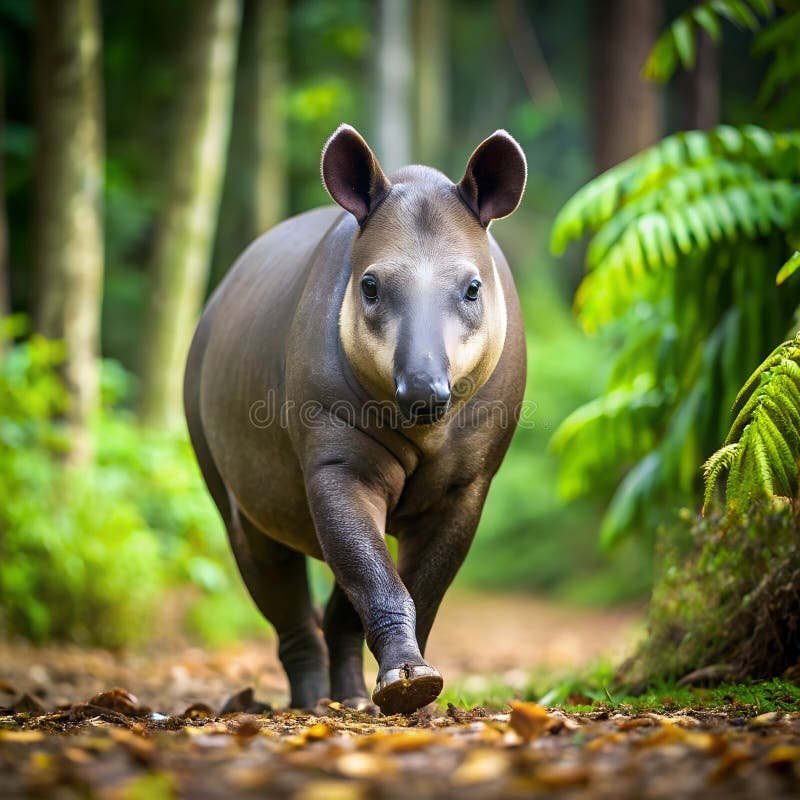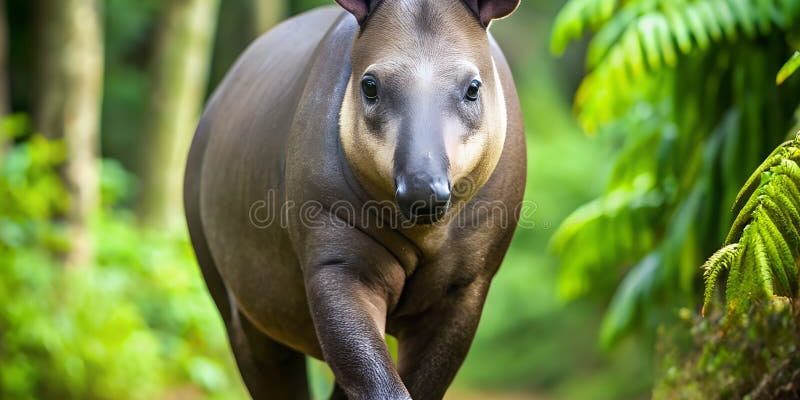
Brazilian tapirs are large, herbivorous mammals native to the rainforests and wetlands of South America. They have a distinctive look, with their rounded bodies and short legs, making them appear almost like a giant version of a pedomorphic animal. Here’s the thing: they may not have the flashy intelligence of dolphins or the complex behaviors of chimpanzees, but they show great adaptability and problem-solving skills that are quite impressive in their own right. Let’s take a deep dive into the cognitive world of these gentle giants and explore their behaviors and intelligence.
Understanding Brazilian Tapirs
Let’s start by getting to know the Brazilian tapir a bit better. These creatures are the largest land mammals in South America, weighing up to 700 pounds and standing about 3 feet tall at the shoulder. They have a flexible snout that helps them reach leaves, fruits, and aquatic plants, making them excellent foragers.
While they might look a bit clumsy, tapirs are surprisingly agile. They can swim well, and their strong limbs help them maneuver through dense vegetation. But what really sets them apart is how they navigate their environment, often using trails they’ve created themselves, which shows a level of memory and environmental awareness.
You might be wondering: how do they learn and remember things? Brazilian tapirs rely largely on their sense of smell and hearing, which are key to their survival. Their large, sensitive noses can detect food and potential predators from quite a distance, giving them an edge in the wild.
Cognitive Abilities of Brazilian Tapirs
Honestly, when we talk about the intelligence of Brazilian tapirs, it’s essential to recognize that they exhibit what we might call “survival intelligence.” This means their cognitive skills revolve around finding food, avoiding predators, and adapting to their changing habitats.
Research suggests that tapirs have a good memory, particularly when it comes to locating food sources. For example, they can remember the locations of fruit trees and will return to them season after season. This ability isn’t just luck; it shows they have learned to navigate their environment effectively.
Another fascinating aspect of their intelligence is their problem-solving skills. Brazilian tapirs often have to figure out how to access food that may be hard to reach. They might manipulate branches or navigate tricky terrain to get to a tasty treat. This kind of behavior highlights their ability to think critically about their surroundings, which is a sign of cognitive ability.
Behavioral Traits of Brazilian Tapirs
Now that we’ve touched on their intelligence, let’s dive into some interesting behavioral traits. Brazilian tapirs are known for their solitary nature, often preferring to roam alone, except during mating season. This behavior could suggest a certain level of independence and self-sufficiency, which is vital in the wild.
They are primarily nocturnal, which means they become active at night. This behavior allows them to avoid many predators, such as jaguars and pumas, that hunt during the day. Adapting to a nocturnal lifestyle shows their ability to modify behavior based on environmental pressures.
Another significant behavior is their communication. While tapirs may not be as vocal as some animals, they do make sounds, especially during mating. They communicate through whistling, grunting, and even hissing. These sounds can signify various needs or states, such as distress or a call for a mate. It’s a simple but effective way to convey messages without relying on complex social structures.
Social Interactions and Learning
You might think that being a solitary animal means Brazilian tapirs don’t engage socially, but that’s not entirely true. While they may not form tight bonds like elephants or wolves, they do have opportunities to interact with others during mating season.
When young tapirs are born, they are nursed and taught by their mothers for about a year. This nurturing period is crucial for their development, as they learn about their environment and how to find food. Observational learning plays a big role here, as young tapirs watch their mothers and mimic their foraging behavior.
Moreover, some studies have suggested that tapirs may recognize individuals, even those from previous encounters. This kind of memory and recognition points to a more complex social understanding than some might expect from such a seemingly simple creature.
Conservation and the Impact of Intelligence
Understanding the cognitive abilities and behaviors of Brazilian tapirs is essential for their conservation. Knowing how they interact with their environment can help us develop better strategies to protect their habitats and ensure their survival.
For instance, tapirs play a vital role in their ecosystem as seed dispersers. They eat fruits and, through their natural processes, help in the growth of new plants. Protecting their environment isn’t just about saving tapirs; it’s about maintaining the entire ecosystem they support.
Conservation efforts that include habitat protection and awareness about the importance of tapirs can make a significant difference. Educating local communities about their role can encourage coexistence and lead to more effective conservation strategies.
In the end, Brazilian tapirs might not be the first animals you think of when it comes to intelligence, but they possess a unique blend of cognitive abilities and behaviors that are both fascinating and essential for their survival. From their impressive memory and problem-solving skills to their solitary yet meaningful social interactions, Brazilian tapirs demonstrate that intelligence comes in many forms.
So, the next time you’re exploring the wonders of wildlife, don’t overlook these gentle giants. Their adaptability and cunning remind us that intelligence isn’t just about being flashy; it’s often found in the quiet corners of nature, thriving in its own, unique way.

